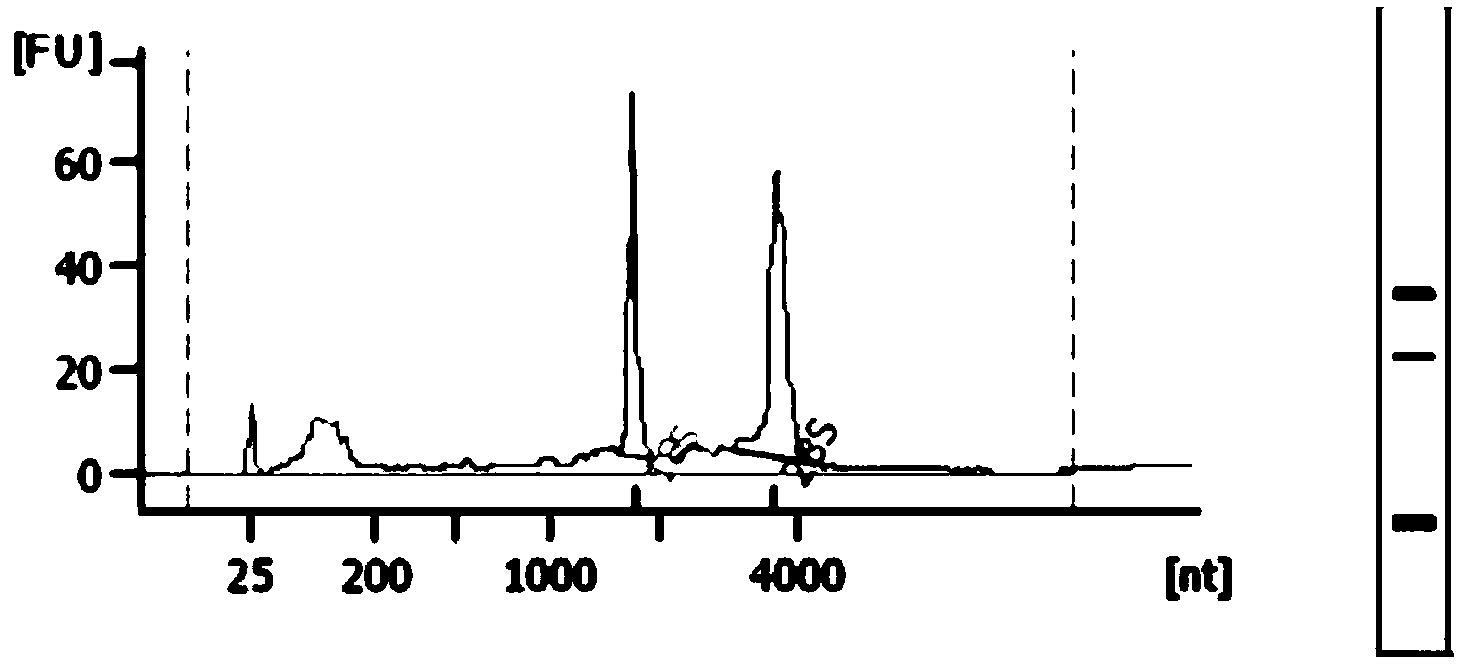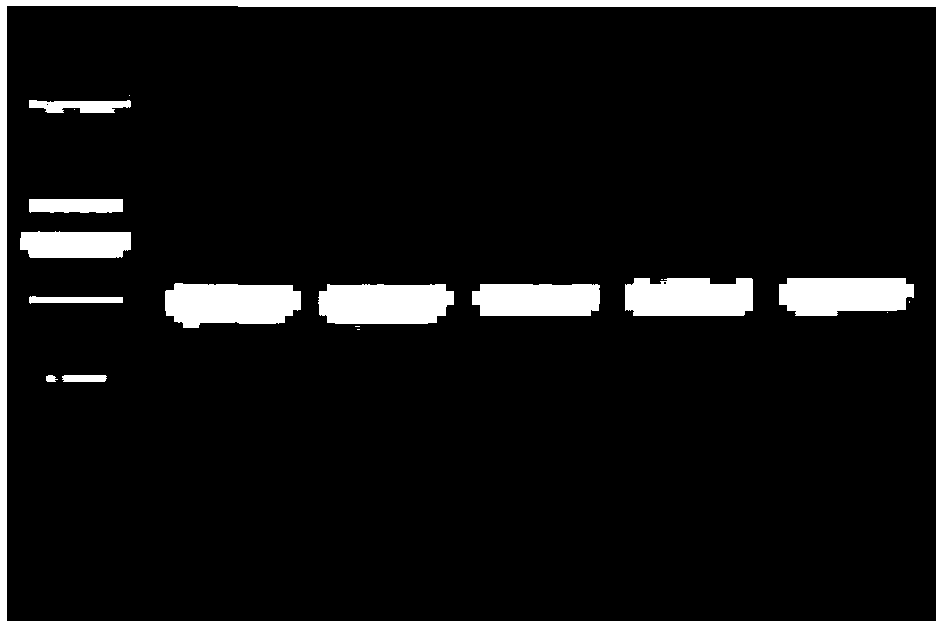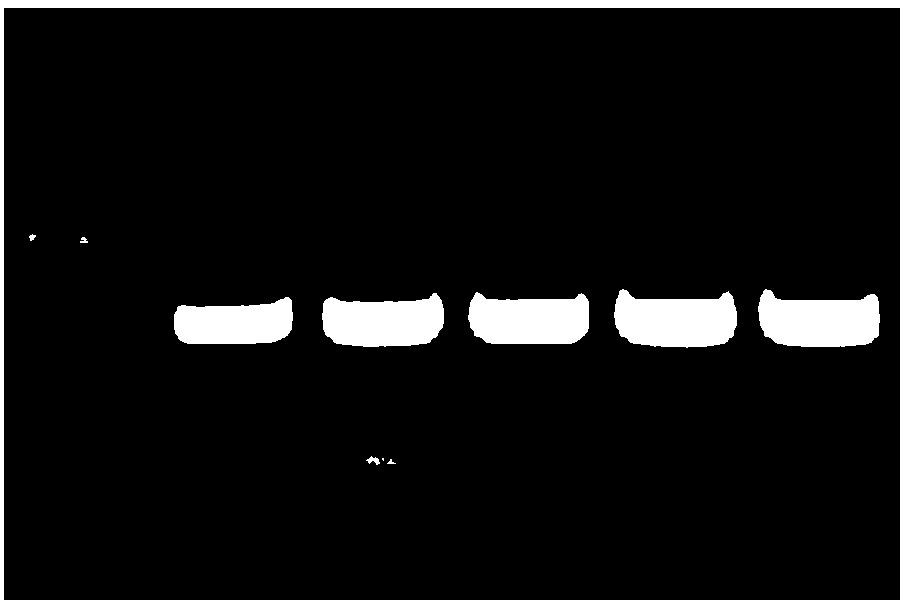Extraction method for total RNA from secondary follicle tissue of Cashmere goat
A technology of secondary hair follicles and cashmere goats, which is applied in the field of total RNA extraction, can solve the problems of difficult grinding, troublesome sampling work, RNA yield and quality can not be guaranteed, and achieve the effect of good integrity and high purity
- Summary
- Abstract
- Description
- Claims
- Application Information
AI Technical Summary
Problems solved by technology
Method used
Image
Examples
Embodiment 1
[0034] (1) Preparation before extraction of total RNA from secondary hair follicle tissue
[0035] The total RNA of secondary hair follicle tissues of different cashmere goats was extracted by silica gel membrane adsorption column method. The extraction process is as follows:
[0036] ①Sample collection and processing
[0037] The secondary hair follicle tissues of 5 Shanbei white cashmere goats were collected from a farm in the suburbs of Yulin City, Shaanxi Province. The side of each sheep was wiped and sterilized with iodine tincture and alcohol cotton balls, and 5 small pinches of wool and cashmere mixture were extracted and put into 1.5mL RNase-free finger tubes filled with RNAlater preservation solution to obtain 5 The wool and cashmere mixture samples were tightly capped and placed in an incubator with frozen ice packs, transported back to the laboratory (the time from sampling to delivery to the laboratory was 4 days), and stored in a 4°C refrigerator.
[0038] Each...
Embodiment 2
[0042] Example 2 Extraction of total RNA from the secondary hair follicle tissue of sample 1
[0043] The specific extraction process of the total RNA of the first secondary hair follicle tissue sample is as follows:
[0044] 1) Quickly transfer the isolated secondary hair follicle tissue to the lysate (the lysate is pH 7.0, the concentration is 30mmol / L Tris-HCl, 5mol / L guanidine isothiocyanate, and 1% β-mercaptoethanol into), use a grinding pestle to grind the secondary hair follicle tissue in the lysate, fully grind to break the tissue to obtain a mixed solution, the grinding time is 5min, carefully remove the hair follicle with pointed tweezers; because the hair follicle is attached to the hair follicle, grind After the tissue falls off, the velvet stem needs to be removed.
[0045] 2) Use a pipette to transfer the ground mixture to a finger tube, centrifuge at 10,000rpm for 3min, and carefully transfer the supernatant to a 1.5mL RNase-free finger tube;
[0046] 3) Add a...
Embodiment 3
[0052] Example 3 Extraction of total RNA from the secondary hair follicle tissue of sample 2
[0053] The specific extraction process of the total RNA of the second secondary hair follicle tissue sample is as follows:
[0054] 1) Quickly transfer the isolated secondary hair follicle tissue to the lysate (the lysate is pH 7.0, the concentration is 30mmol / L Tris-HCl, 5mol / L guanidine isothiocyanate, and 1% β-mercaptoethanol into), use a grinding pestle to grind the secondary hair follicle tissue in the lysate, fully grind to break the tissue to obtain a mixed solution, the grinding time is 10min, carefully remove the hair follicle with pointed tweezers; because the hair follicle is attached to the hair follicle, grind After the tissue falls off, the velvet stem needs to be removed.
[0055] 2) Use a pipette to transfer the ground mixture to a finger tube, centrifuge at 10,000rpm for 5min, and carefully transfer the supernatant to a 1.5mL RNase-free finger tube;
[0056] 3) Add...
PUM
 Login to View More
Login to View More Abstract
Description
Claims
Application Information
 Login to View More
Login to View More - R&D
- Intellectual Property
- Life Sciences
- Materials
- Tech Scout
- Unparalleled Data Quality
- Higher Quality Content
- 60% Fewer Hallucinations
Browse by: Latest US Patents, China's latest patents, Technical Efficacy Thesaurus, Application Domain, Technology Topic, Popular Technical Reports.
© 2025 PatSnap. All rights reserved.Legal|Privacy policy|Modern Slavery Act Transparency Statement|Sitemap|About US| Contact US: help@patsnap.com



